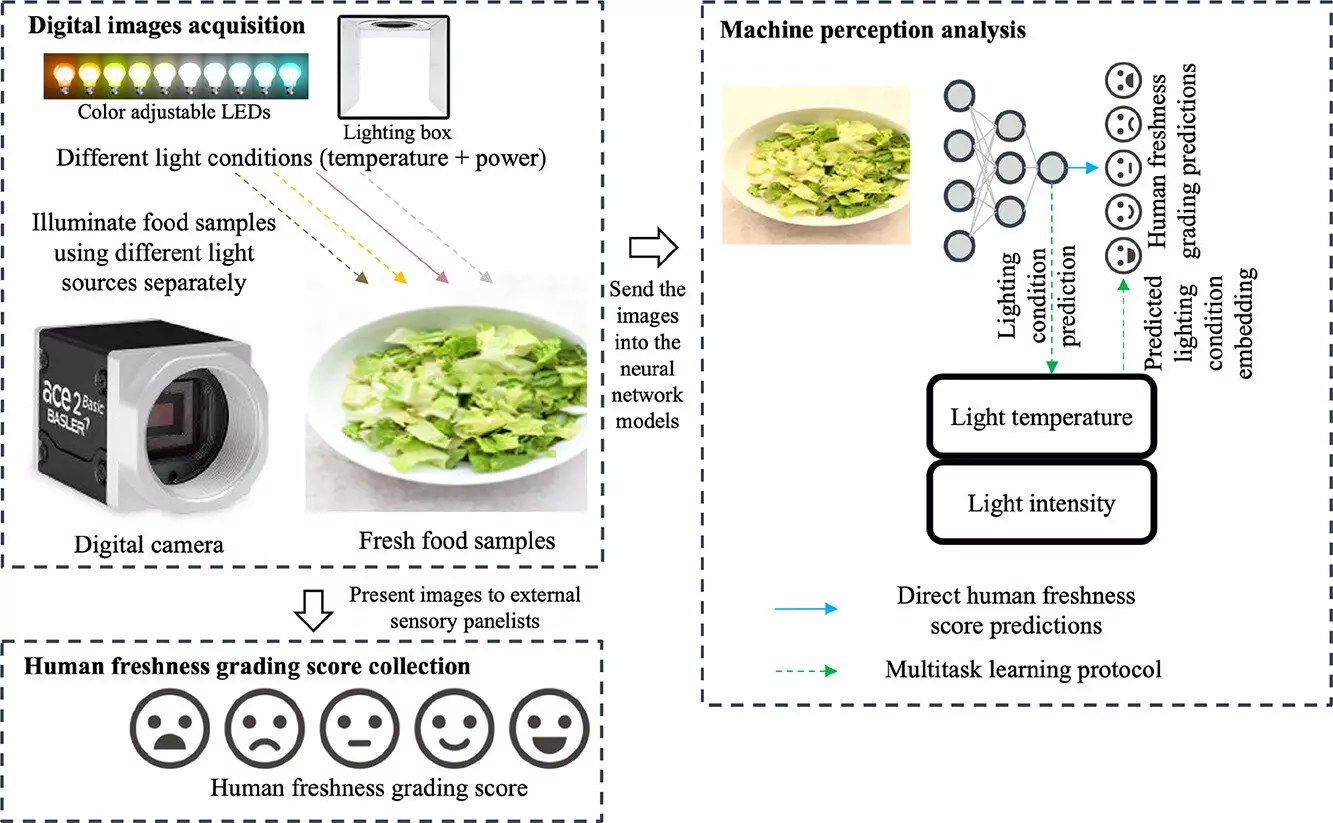Picking the perfect apple or selecting the freshest produce at the grocery store can sometimes feel like a gamble. While shoppers might rely on their instincts, researchers are striving to develop more reliable tools to assess food quality. Utilizing the insights from human perception alongside machine-learning algorithms has emerged as a promising strategy. A recent study spearheaded by researchers at the Arkansas Agricultural Experiment Station sheds light on this approach, indicating that an app could soon assist consumers in choosing the best products based on advanced data analytics.
The team’s exploration into food quality assessment begins with an acknowledgment of the variability inherent in human perception. People often perceive food differently based on numerous factors, such as lighting conditions. Traditionally, machine-learning models have struggled with this inconsistency, failing to provide reliable predictions when applied to varying environmental contexts. Dongyi Wang, the study’s lead researcher and an assistant professor in the departments of biological and agricultural engineering and food science, noted, “Understanding the reliability of human perception is crucial as we strive to enhance the consistency of machine-learning models.”
The study reveals that advancements can be made when machine-learning systems are trained on data that incorporates human evaluative standards rather than relying solely on computerized algorithms that may overlook these nuances.
To bridge the gap between human perception and machine assessments, researchers conducted a detailed study focusing on lettuce quality. Participants in the study rated the freshness of Romaine lettuce images under varying lighting conditions over five days. A total of 109 participants evaluated numerous images, grade-marking them from zero to 100 based on their freshness. The images were intentionally taken under different lighting settings to collect a variety of conditions affecting the perception of browning in the lettuce.
The data compiled from this human sensory evaluation underwent analysis by various machine-learning models. According to the findings published in the Journal of Food Engineering, predictions of food quality improved significantly when human perceptions were incorporated into the algorithm training process. Wang’s team reported a reduction in prediction errors by about 20 percent, showcasing how human input can enhance machine learning’s effectiveness in food quality assessments.
Implications for Grocery Stores and Machine Vision Technology
One of the study’s most exciting implications is its potential application in grocery stores. Enhancing the presentation of food items could lead to better-quality assessment and improved sales. Armed with the knowledge from this research, grocery retailers could develop strategic lighting and presentation methods to enhance consumer perception of freshness, ultimately fostering healthier choices.
Additionally, the findings underline the broader potential of machine vision technology beyond just food quality. The methods established in this study could be repurposed to evaluate various products, such as jewelry or cosmetics, where visual perception plays a crucial role in consumer decision-making.
As promising as these developments appear, there are challenges that remain. The continued integration of human variability into machine-learning models calls for ongoing research to better understand how various factors can influence perceptions across demographics and contexts. The sample size must be expanded to gather a more diverse set of responses, which could better train algorithms to maintain accuracy regardless of user background or situational variables.
Furthermore, environmental conditions will always change, extending the dialogue on how to develop robust machine-learning models that can adapt to new parameters. As the study highlights, the journey is still long-term, but the first steps towards a more reliable system of food quality assessment have been laid.
The intersection of human perception and advanced machine-learning techniques provides an exciting frontier for the evaluation of food quality. As advancements continue to develop from research like that conducted at the Arkansas Agricultural Experiment Station, the concept of an application that aids consumers in their grocery shopping decisions is increasingly within reach. By harnessing the strengths of both human insight and technology, we may soon witness an innovative approach to food quality assessment that enhances consumer satisfaction and confidence in food selection.



Leave a Reply